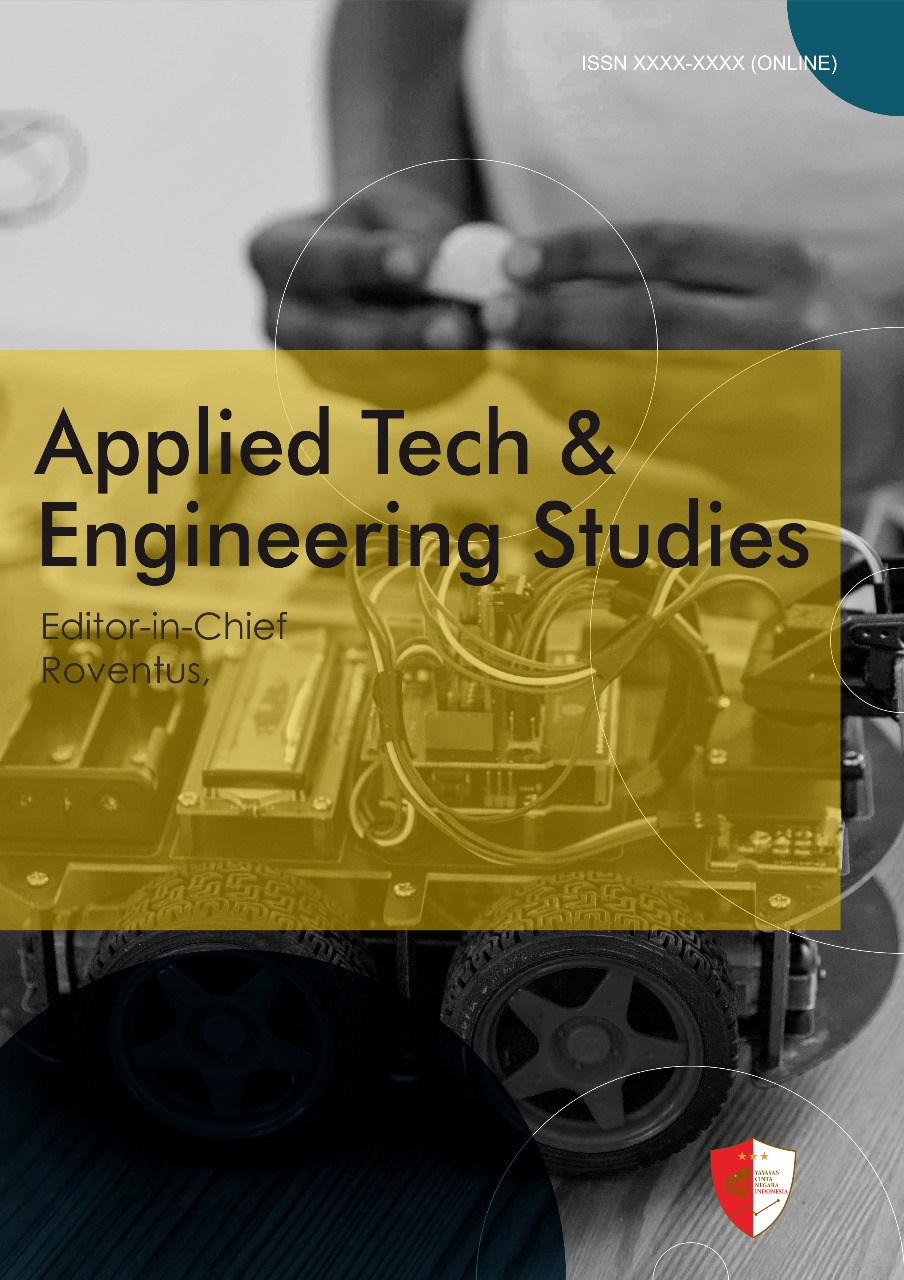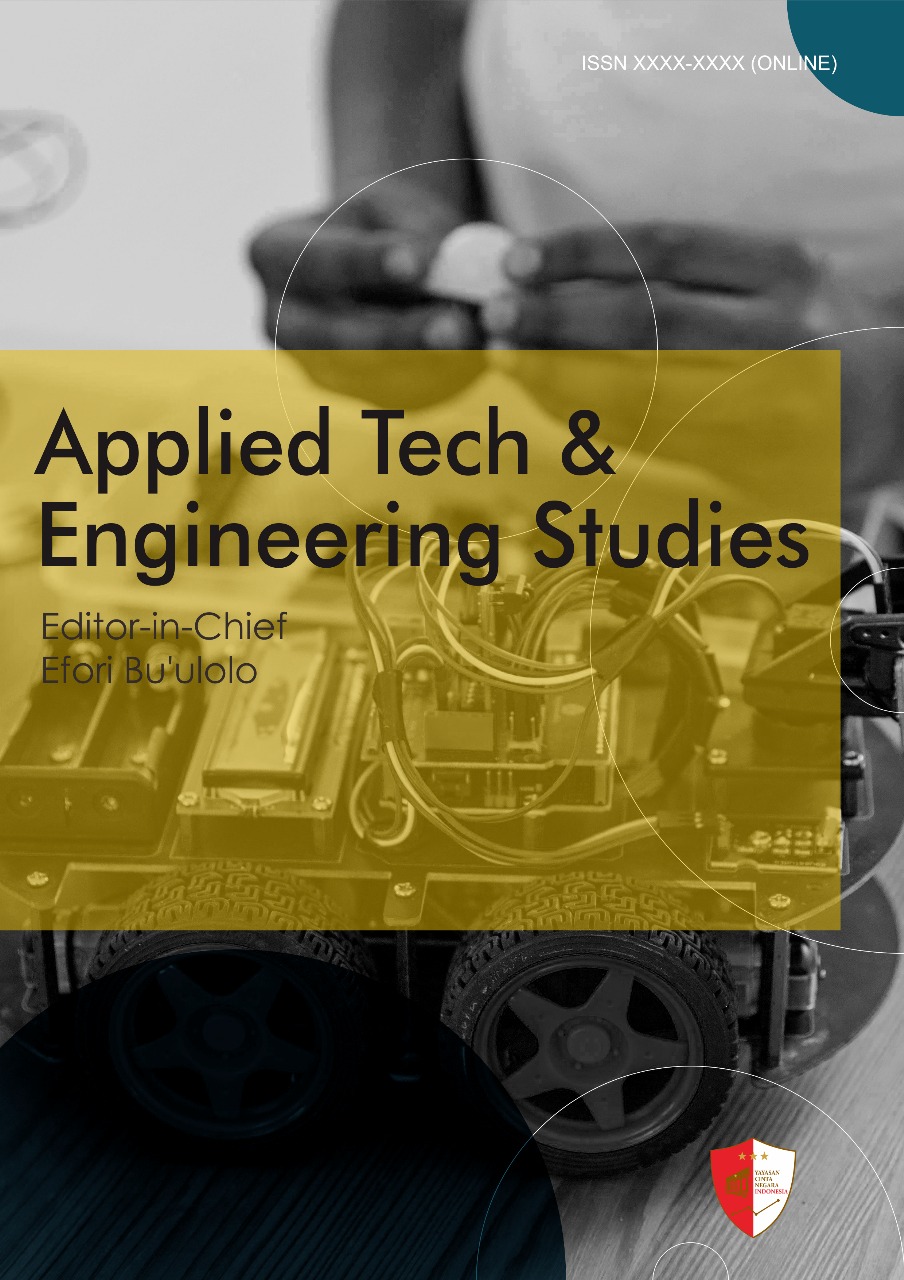Design and implementation of an iot-based electrical energy monitoring system in commercial buildings
Keywords:
Commercial Buildings, Electrical Energy, IoT, Monitoring System, Smart Energy ManagementAbstract
This study presents the design and implementation of an Internet of Things (IoT)-based electrical energy monitoring system tailored for commercial buildings. With the growing demand for energy efficiency and sustainability, real-time monitoring has become essential for reducing operational costs and improving energy management practices. The proposed system utilizes microcontroller-based hardware (ESP32) integrated with current and voltage sensors to capture real-time electrical parameters such as power consumption, voltage levels, current flow, and energy usage patterns. Data acquisition is achieved through wireless communication via Wi-Fi, with all measurements transmitted to a cloud-based platform for storage, visualization, and analysis. A web-based dashboard and mobile interface provide users with intuitive access to energy usage statistics, historical trends, and anomaly alerts. The system was tested in a mid-sized commercial building, and results demonstrated high accuracy in energy readings, low latency in data transmission, and effective identification of peak consumption periods. This IoT-based approach offers scalability, affordability, and flexibility, making it a viable solution for smart energy management in commercial environments. The findings support the integration of IoT technologies into building energy systems to promote real-time decision-making and reduce overall energy consumption
References
Ahmad, S., Zaid, O., & Farooq, F. (2020). Durability of geopolymer concrete: A review. Construction and Building Materials, 246, 118415.
Aliabdo, A. A., Abd Elmoaty, A. E. M., & Emam, M. A. (2019). Factors affecting the mechanical properties of alkali-activated slag concrete. Construction and Building Materials, 197, 339–355.
Andrew, R. M. (2018). Global CO₂ emissions from cement production. Earth System Science Data, 10(1), 195–217.
Assi, L. N., Deaver, E., Ziehl, P., & Daito, M. (2018). Mechanical and durability characteristics of concrete based on Class F fly ash and slag. Construction and Building Materials, 112, 669–677.
ASTM C109/C109M-20b. (2020). Standard Test Method for Compressive Strength of Hydraulic Cement Mortars. ASTM International.
ASTM C642-13. (2013). Standard Test Method for Density, Absorption, and Voids in Hardened Concrete. ASTM International.
Bakharev, T. (2005). Durability of geopolymer materials in sodium and magnesium sulfate solutions. Cement and Concrete Research, 35(6), 1233–1246.
Bernal, S. A., Provis, J. L., Rose, V., & Mejía de Gutiérrez, R. (2011). Evolution of binder structure in sodium silicate-activated slag–metakaolin blends. Cement and Concrete Composites, 33(1), 46–54.
Chindaprasirt, P., & Rattanasak, U. (2021). Fly ash-based geopolymer concrete: A review of the compressive strength, setting time, and durability. Materials Today: Proceedings, 45, 4350–4356.
Davidovits, J. (2008). Geopolymer Chemistry and Applications (2nd ed.). Institut Géopolymère.
Duxson, P., Fernández-Jiménez, A., Provis, J. L., Lukey, G. C., Palomo, A., & van Deventer, J. S. J. (2007). Geopolymer technology: The current state of the art. Journal of Materials Science, 42(9), 2917–2933.
Hardjito, D., & Rangan, B. V. (2005). Development and properties of low-calcium fly ash-based geopolymer concrete. Research Report GC1, Curtin University of Technology.
Heah, C. Y., Kamarudin, H., Al Bakri, A. M. M., Binhussain, M., Luqman, M., Nizar, I. K., & Liew, Y. M. (2013). Effect of curing profile on kaolin-based geopolymers. Physics Procedia, 50, 305–311.
Huseien, G. F., Shah, K. W., Sam, A. R. M., & Aslani, F. (2019). A review on durability and mechanical properties of alkali-activated concrete: Challenges and opportunities. Construction and Building Materials, 235, 117490.
Islam, A., Alengaram, U. J., Zamin Jumaat, M., & Bashar, I. I. (2016). The development of compressive strength of ground granulated blast furnace slag-palm oil fuel ash-based geopolymer mortar. Materials & Design, 89, 614–624.
Joseph, B., & Mathew, G. (2012). Influence of aggregate content on the behavior of fly ash based geopolymer concrete. Scientia Iranica, 19(5), 1188–1194.
Khan, M. N. N., Hossain, K. M. A., & Lachemi, M. (2016). Performance of blended cement concrete in marine environment. Construction and Building Materials, 123, 928–936.
Kong, D. L. Y., & Sanjayan, J. G. (2010). Effect of elevated temperatures on geopolymer paste, mortar and concrete. Cement and Concrete Research, 40(2), 334–339.
Kumar, R., Kumar, S., & Mehrotra, S. P. (2010). Influence of granulated blast furnace slag on the reaction, structure, and properties of fly ash based geopolymer. Journal of Materials Science, 45, 607–615.
Mehta, A., & Siddique, R. (2016). Durability of low-calcium fly ash-based geopolymer concrete. Journal of Cleaner Production, 100, 243–252.
Olivia, M., & Nikraz, H. (2012). Properties of fly ash geopolymer concrete designed by Taguchi method. Materials & Design, 36, 191–198.
Palomo, A., Grutzeck, M. W., & Blanco, M. T. (1999). Alkali-activated fly ashes: A cement for the future. Cement and Concrete Research, 29(8), 1323–1329.
Provis, J. L., & van Deventer, J. S. J. (Eds.). (2014). Alkali Activated Materials: State-of-the-Art Report, RILEM TC 224-AAM. Springer.
Puertas, F., Palacios, M., Manzano, H., Dolado, J. S., Rico, A., & Rodríguez, J. (2011). A model for the C-A-S-H gel formed in alkali-activated slag cements. Journal of the European Ceramic Society, 31(12), 2043–2056.
Rangan, B. V. (2008). Fly ash-based geopolymer concrete. Proceedings of the International Conference on Geopolymer Concrete, Curtin University.
Rashad, A. M. (2013). A comprehensive overview of the properties of alkali-activated fly ash/slag concretes. Journal of Cleaner Production, 63, 353–370.
Sathonsaowaphak, A., Chindaprasirt, P., & Pimraksa, K. (2009). Workability and strength of lignite bottom ash geopolymer mortar. Journal of Hazardous Materials, 168(1), 44–50.
Shi, C., Krivenko, P. V., & Roy, D. M. (2006). Alkali-Activated Cements and Concretes. Taylor & Francis.
Sofi, M., van Deventer, J. S. J., Mendis, P. A., & Lukey, G. C. (2007). Engineering properties of inorganic polymer concretes (IPCs). Cement and Concrete Research, 37(2), 251–257.
Temuujin, J., Riessen, A., & Williams, R. (2009). Influence of calcium compounds on the mechanical properties of fly ash geopolymer pastes. Journal of Hazardous Materials, 167(1), 82–88
Downloads
Published
Issue
Section
License
Copyright (c) 2025 Dimas Nugroho, Adi Sanjaya (Author)

This work is licensed under a Creative Commons Attribution-NonCommercial 4.0 International License.





